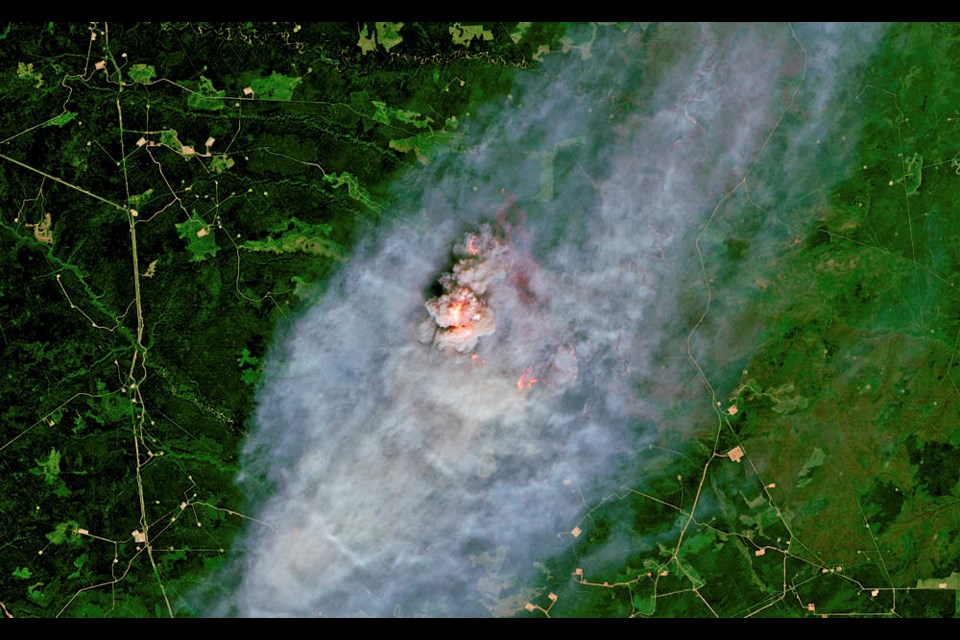Wildfire expert Mike Flannigan had a wary eye on forecasts for a record B.C. heat wave in the days before taking up his post as a researcher at Thompson Rivers University in Kamloops.
Rising temperatures are “climate change in action,” he said. “And heat and fires are connected, because the hotter it is, the longer the fire season.”
Helping the province cope with such wildfires will be Flannigan’s job as B.C. Research Chair in emergency preparedness and fire science at TRU, funded by a $5-million provincial endowment, which will see him work closely with the B.C. Wildfire Service.
Postmedia first spoke with Flannigan Wednesday, just hours before the Lytton Creek wildfire forced more than 1,000 people from their homes, razed much of the historic village, and killed at least two people.
“What happened in Lytton is tragic,” he after the fire, which followed the record-setting heat wave with temperatures hitting 49.6 C in Lytton, the hottest ever in Canada.
To Flannigan, the start of this summer looks a lot like the start of the 2017 fire season, which went on to burn more than 12,000 square kilometres. Only this year, it is shaping up sooner.
“Conditions are still extreme in any parts of British Columbia,” Flannigan said. “If it’s a hot, dry, or even a normally hot, dry summer, fire is going to be with us all summer, and the associated smoke.”
Extreme heat has been a precursor to extreme fires around the globe, in California, Australia and even in the Arctic, Flannigan said, so forecasters need to follow the weather better in their early warning systems for fire.
“I think we’re at the point where we have enough models and information,” he said.
For instance, the models predicting B.C.’s record-setting heat wave were right, so “that would give people lead time to say, OK, where do the models say the most extreme fire weather is going to be?”
“Where do we know human-caused ignitions [will] be? Where do the models say that lightning activity will be? And then you move crews and helicopters, etc., to those areas, because one of the important things about fire, it’s driven by extremes.”
Flannigan, whose full title will be B.C. Research Chair in predictive services, emergency management and fire science, will be joined in 2022 by fire ecologist Jill Harvey, a Canada Research Chair in fire ecology, as part of an effort to help B.C. adapt to the “new normal” of heightened wildfire risk in the midst of the climate crisis.
“The goal of these commitments is to make communities safer, reduce wildfire risks and research new ways of mitigating wildfire risks,” said Forest Minister Katrine Conroy in unveiling $20 million in spending on wildfire safety.
The two academics will bolster TRU’s growing expertise in wildfire research.
Kamloops is a logical place for the new position, Flannigan said, since that is where the B.C. Wildfire Agency’s fire centre is located.
Flannigan is coming to TRU from the University of Alberta, 40 years into a career that started with the Canadian Forest Service developing tools to help fire management agencies and then branched into academia.
He views this position as “coming full circle,” getting back to more direct involvement in helping a fire-management agency do its job better.
“I can publish papers and they can sit on the shelf,” Flannigan said, “but changing how fire-management works can make a big difference. That’s what drew me to the job.”
He is keen to build on B.C.’s changing philosophy of allowing wildfire to occur more naturally on the landscape rather than trying to prevent all fires, which was the ethos for decades.
B.C. recently adopted new priorities for which forest fires it will fight. If a fire is remote enough and doesn’t endanger lives, property or immediate timber values, managers consider allowing fires to burn as a means reduce fuel loads in undergrowth to reduce the intensity of future fires.
In a future of climate change and hotter, longer fire seasons, Flannigan said allowing more natural fire in forests can prevent catastrophic fires that roll across vast swaths of the landscape.
“We want this patchwork quilt, or mosaic of recently burned areas,” which act as fire breaks when fires do start.
Flannigan’s ambition, however, is to help B.C. fire managers speed up their decision-making on which fires will be allowed to burn.
Decisions on fires close to people, such as the suburbs of Kamloops, are automatic and easy, he said, but even in remote locations, managers need to be able to make a judgment within five minutes of ignition.
“You have a narrow window where you have this opportunity to suppress the fire,” he said. “Once it gets to the football-field size, or soccer pitch, in hot, dry, windy [conditions], the horse has left the barn.”



